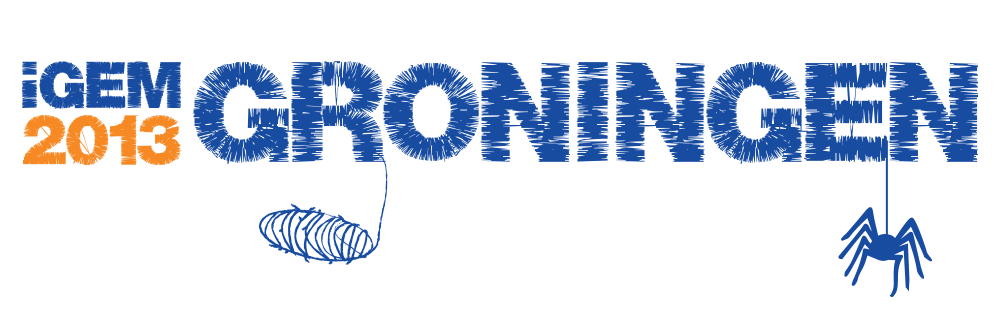Team:Groningen
From 2013.igem.org
| Home | Team | Official Team Profile | Project | Parts Submitted to the Registry | Modeling | Notebook | Safety | Attributions | TESTPAGE |
|---|
University of GroningenThe unique properties of silk have provided it with a utility that goes far beyond that of any other natural fibers known to man. Its amazing mechanical properties, 'silky smooth' softness, and bio-compatibility, has led to applications ranging from from simple clothing to high tech biomedical devices. The industry from which silk is obtained, however, is less than ideal. Scientists have therefore begun to design silk-producing micro-organisms. The 2012 iGEM team from Utah have indeed successfully designed BioBricks for this very purpose. However, these micro-organisms remain inadequate in the secretion of silk, which is a major limiting factor on the range of potential biosynthetic designs and applications. Our goal is to solve the secretion issue and to use it for the formation of a silk biofilm. The beauty of such a biofilm can be attributed to the properties of silk, and to the fact that any imaginable shape of seamless silk could be created since the biofilm grows in such a way as to fit its mold. We will be exploiting these properties to coat biomedical prosthetic devices, with the goal to prevent infections, and hence to prevent the required operations in dealing with such infections. University of GroningenWelcome to the website of the 2013 iGEM team from Groningen! This year our team consists of twelve under- and postgraduate students from a wide range of disciplines; Chemistry, Biomedical Engineering, Physics, Computing Science, Industrial Engineering, Bio-informatics, and ofcourse Biology. We have a highly versatile group with many different interests, which will hopefully provide us with different perspectives on the problems to be solved. Silk secretion by Bacillus subtilisThis year we will pick up where the 2012 iGEM team from Utah left off. Utah managed to successfully produce spider silk proteins in “E.Coli”, after which the bacteria was lysated to purify the silk proteins and achieve polymerization. Our goal is to use Utah's biobricks to create a silk biofilm without having to destroy the bacteria. This can be achieved by secreting the silk proteins, for which we will use the 'Sec pathway' in Bacillus Subtilis. This micro-organism is more suitable for biofilm formation than E.Coli due to it's capability of adhering to certain surfaces. |
 "
"
